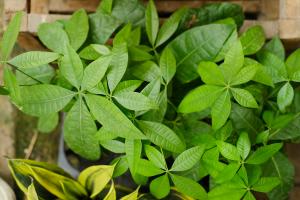What Makes a Plant Green
Green plants are found all around us. From vast fields of grass to towering trees, their greenery is a common sight. But what makes a plant green? The simple answer is chlorophyll.
The Role of Chlorophyll
Chlorophyll is a pigment found in most plants that gives them their green color. It plays a crucial role in the process of photosynthesis, the way in which plants convert sunlight into energy. When sunlight hits a plant's leaves, chlorophyll absorbs the light and uses it to power the process of photosynthesis.
In essence, chlorophyll acts as a catalyst, helping plants to convert water and carbon dioxide into glucose and oxygen. This glucose is then used by the plant as a source of energy to fuel its growth and development.
The Science Behind Chlorophyll
Chlorophyll is a complex molecule made up of several different parts. At its center is a magnesium ion, which absorbs light energy and helps to transfer it to other parts of the molecule. Chlorophyll is also made up of carbon, nitrogen, and hydrogen atoms, which are arranged in a specific way to allow for the absorption of light energy.
Interestingly, chlorophyll is not the only pigment found in plants. There are several other pigments, such as carotenoids and anthocyanins, which give plants their red, orange, and yellow hues. However, chlorophyll is the most important pigment in plants, as it is directly involved in the process of photosynthesis.
The Importance of Plants
Plants are vital to our existence. They provide us with food, oxygen, and numerous other resources. They also play a crucial role in regulating the Earth's climate, by absorbing carbon dioxide from the atmosphere and releasing oxygen back into it.
Despite their importance, however, plants are often taken for granted. We rarely appreciate the beauty of their greenery or the complexity of their biology. Understanding what makes a plant green is just the first step in appreciating the wonder and importance of these amazing organisms.

 how many times do yo...
how many times do yo... how many planted tre...
how many planted tre... how many pine trees ...
how many pine trees ... how many pecan trees...
how many pecan trees... how many plants comp...
how many plants comp... how many plants can ...
how many plants can ... how many plants and ...
how many plants and ... how many pepper plan...
how many pepper plan...































